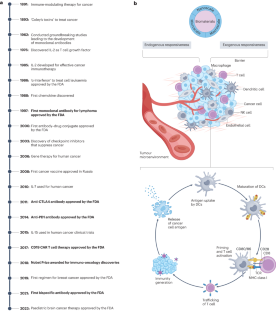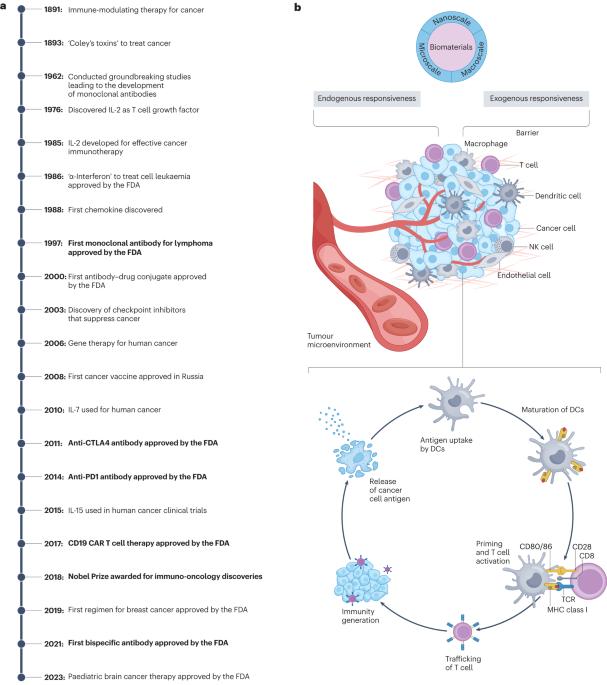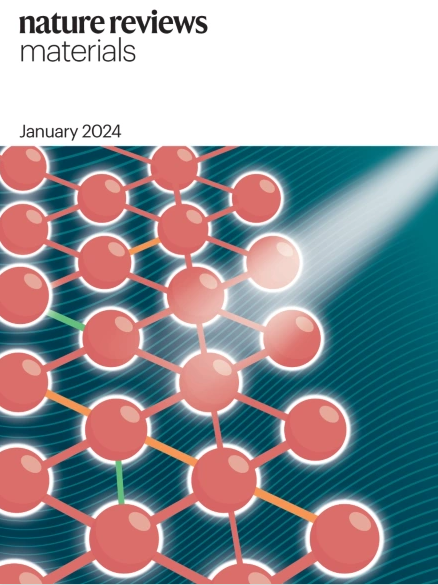Responsive biomaterials: optimizing control of cancer immunotherapy
IF 86.2
1区 材料科学
Q1 MATERIALS SCIENCE, MULTIDISCIPLINARY
引用次数: 0
Abstract
Immunotherapy has emerged as an eminent and effective modality in the treatment of cancer. However, current cancer immunotherapies lack spatial and temporal control, resulting in systemic side effects and suboptimal patient outcomes. Responsive biomaterials have proven to be powerful tools for controlling cancer immunotherapies by providing precise control over the delivery and kinetics of immunotherapeutic cargoes. Here, we discuss biological barriers to cancer immunotherapy and how biomaterial-based strategies that respond to different stimuli — both internal and external — can be used to increase the therapeutic efficacy while reducing the toxicity of cancer immunotherapies. We examine the use of biomaterials that respond to physiological stimuli (pH, enzymes and redox potential) and exogenous energetic stimuli (light, magnetism and ultrasound) and expand upon the use of these strategies in propagating three key approaches in cancer immunotherapy: cancer vaccines, T cell-based therapy and therapies involving sustained delivery. Immunotherapy represents an important advance in cancer treatment, yet faces challenges owing to lack of precise control, leading to systemic effects and suboptimal results for patients. This Review explores how responsive biomaterials can enhance cancer immunotherapies by responding to various internal and external stimuli to regulate the delivery and behaviour of therapeutic agents, thereby improving efficacy and reducing toxicity in treatment methods such as cancer vaccines, T cell-based therapies and sustained delivery systems.


响应性生物材料:优化癌症免疫疗法的控制
免疫疗法已成为治疗癌症的一种杰出而有效的方法。然而,目前的癌症免疫疗法缺乏空间和时间控制,导致全身副作用和患者疗效不理想。事实证明,响应性生物材料可精确控制免疫治疗载体的输送和动力学,是控制癌症免疫疗法的有力工具。在此,我们将讨论癌症免疫疗法的生物障碍,以及如何利用基于生物材料的策略对不同的刺激(包括内部和外部刺激)做出反应,从而在提高疗效的同时降低癌症免疫疗法的毒性。我们研究了生物材料对生理刺激(pH 值、酶和氧化还原电位)和外源性能量刺激(光、磁和超声)的反应,并扩展了这些策略在癌症免疫疗法三种关键方法中的应用:癌症疫苗、基于 T 细胞的疗法和涉及持续给药的疗法。
本文章由计算机程序翻译,如有差异,请以英文原文为准。
求助全文
约1分钟内获得全文
求助全文
来源期刊

Nature Reviews Materials
Materials Science-Biomaterials
CiteScore
119.40
自引率
0.40%
发文量
107
期刊介绍:
Nature Reviews Materials is an online-only journal that is published weekly. It covers a wide range of scientific disciplines within materials science. The journal includes Reviews, Perspectives, and Comments.
Nature Reviews Materials focuses on various aspects of materials science, including the making, measuring, modelling, and manufacturing of materials. It examines the entire process of materials science, from laboratory discovery to the development of functional devices.
 求助内容:
求助内容: 应助结果提醒方式:
应助结果提醒方式:


